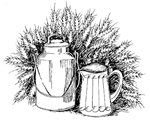NITRIC OXIDE AND YOU HEALTH
 Nitric oxide (NO) is a gas made from one molecule of nitrogen bound to one molecule of oxygen. It is made in the body from the amino acid L arginine, oxygen, a reducing agent called NADPH and various enzymes. Its primary role in the body is to facilitate communication between cells by transmitting signals. In the arterial system NO signals the smooth muscles of the arteries to relax and in so doing dilates the arteries. Dilation of the arteries produces lower blood pressure as blood is able to flow more freely.
Nitric oxide (NO) is a gas made from one molecule of nitrogen bound to one molecule of oxygen. It is made in the body from the amino acid L arginine, oxygen, a reducing agent called NADPH and various enzymes. Its primary role in the body is to facilitate communication between cells by transmitting signals. In the arterial system NO signals the smooth muscles of the arteries to relax and in so doing dilates the arteries. Dilation of the arteries produces lower blood pressure as blood is able to flow more freely.
By promoting better blood circulation, nitric oxide increases oxygen utilization. Delivery of oxygen to all cells of the body is essential to the production of energy. During intense physical exertion, we become oxygen deprived which leads to a buildup of lactic acid in the muscle tissue. Lactic acid buildup leads to muscle fatigue as witnessed by that burning sensation you feel in your muscles with intense exercise. Nitric oxide can reduce muscle fatigue by supplying more oxygen to the tissues. Nitric oxide also appears to help with glucose metabolism.
The American Journal of Endocrinology and Metabolism published a study that tested a group of endurance cyclists and found that nitric oxide helped them assimilate glucose at an increased rate, especially during workouts of an extended duration.
Nitric oxide from vegetables:
In addition to our bodies producing NO as described above, our bodies can also make NO from the nitrate found in vegetables. Nitrate from food is converted in the body to nitrite and then to NO. When young, our bodies produce ample amounts of NO using L arginine and the process explained above. As we age, our bodies become less efficient at producing NO in this manner and by the time we reach forty, studies show we only make about half or less of what we made when in our twenties. As we grow older, vegetable nitrate and its conversion to NO becomes increasingly more important to our health.
Nitrates and nitrites move from the digestive system into the blood and then into saliva. From saliva they move back into the digestive system. In addition to converting to NO, these substances appear to act as antimicrobials in the digestive tract and help to kill pathogenic organisms. Vegetable nitrate is high in spinach, Swiss chard, celery, certain types of lettuce and beets. You can measure your nitric oxide levels using nitric oxide test strips on your saliva. Test strips are available from Berkeley Test through Amazon.com.
Health benefits of nitrate from food:
Vegetable nitrate has been shown to lower blood pressure. In 2013 a study was done involving 26 participants between 38 and 69 years of age. These participants were fed energy matched meals that were either high or low in nitrate. The nitrate high meals resulted in an eight-fold increase in salivary nitrite and a seven-fold increase in salivary nitrate concentrations over what was present before eating these meals. Participants eating the high nitrate meal showed a higher large artery elasticity index, lower pulse pressure and lower systolic blood pressure compared to those who eat a low nitrate meal. A study conducted at Queen Mary University showed that those who drank one cup of beet juice experienced lower blood pressure within 24 hours.
Some studies have shown that beets, which are high in nitrates, can reduce the oxygen used during exercise by 5.4% and increase the time before exhaustion occurs when running by 15%. Sprinting performance was seen to increase by 4%.
A study published in Medicine & Science In Sports & Exercise found that cyclists who drank beet juice before 2.5 mile and 10 mile time trials were almost 3% faster and produced more power than they did without drinking the beet juice.
Nitrates and Nitrosamines:
You may have concerns about nitrates/nitrites and their connection to cancer causing nitrosamines. When nitrates and nitrites are exposed to high heat in the presence of proteins, they can form compounds called nitrosamines. Nitrosamines have been shown to be carcinogenic. Nitrates are often added to processed meats such as hotdogs and bacon as preservatives and color stabilizers. When these meats are heated to high temperatures, nitrosamines are formed. Nitrates from vegetables do not generally produce nitrosamines as such foods are rarely exposed to high heat nor do they have the protein levels of animal products.
Beets as your source of vegetable nitrate:
Beets provide amply amounts of nitrate. Because nitric oxide dilates blood vessels, it can help to reduce high blood pressure. A number of studies have shown consumption of beet juice lowers blood pressure. We encourage you to make beets a part of your diet. If you have a garden, they are easy to grow. They make a great cooked vegetable. You can also use the beet tops in salads or as a cooked vegetable. Canned beets are available at your supermarket but because of processing are not as nutritious. The better choice is to purchase fresh beets from the produce section of your grocer. Drinking beet juice is an excellent way to obtain the benefits of beets.
At Milk ‘N Honey we carry a ready to drink beet juice and a concentrated beet product called RediBeets. RediBeets is dehydrated beet root juice in a powder form that can be added to water to provide instant beet juice. It takes approximately 20 pounds of beets to make one pound of RediBeets powder.